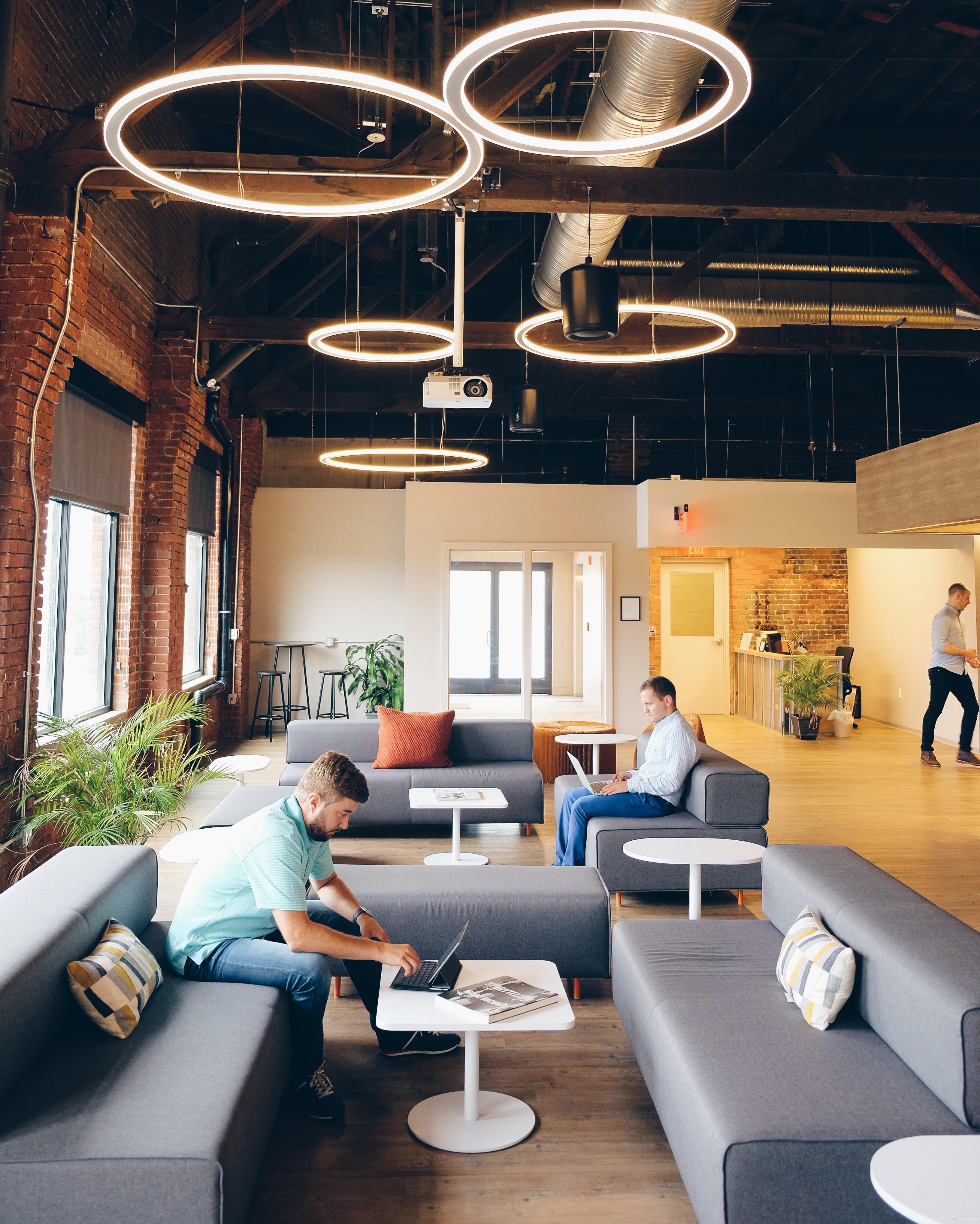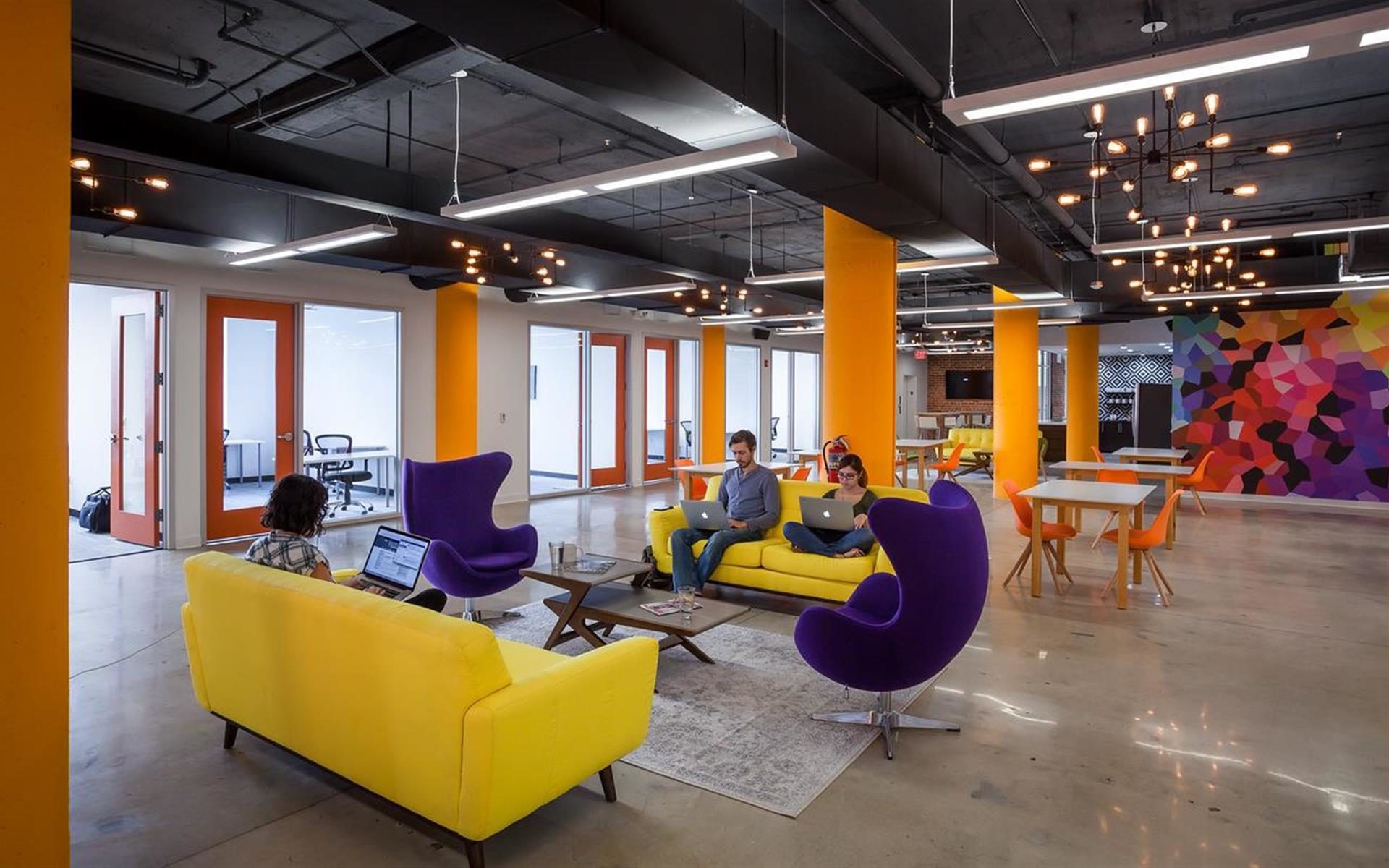
5 Essential Elements of Office Space Design
Layout, light, sound, color and climate can determine the aesthetic of a workspace and influence employee productivity, engagement, and satisfaction.
The future of work has arrived. Here’s how to make it work for you.
Part of our #NewYearNewOffice campaign to help you stay healthy and productive at work
In today’s connected world, the perfect workspace could be anywhere. Yes, the old adage says it’s all about location, location, location, but once you’re in a working environment, it’s all about design. These 5 design elements can determine, not only, the aesthetic and vibe of a workspace, but also influence employee productivity, engagement, and satisfaction.
1. Love your layout
In a workspace, everything should have its place. The layout of a space is the core element of any design, and influences all workspace elements (including those below). Layout, ultimately, is the primary factor in a space’s effects on its occupants. Check out the dynamic Blue Jean Studio in NYC which features an open, modular layout and mobile furniture.
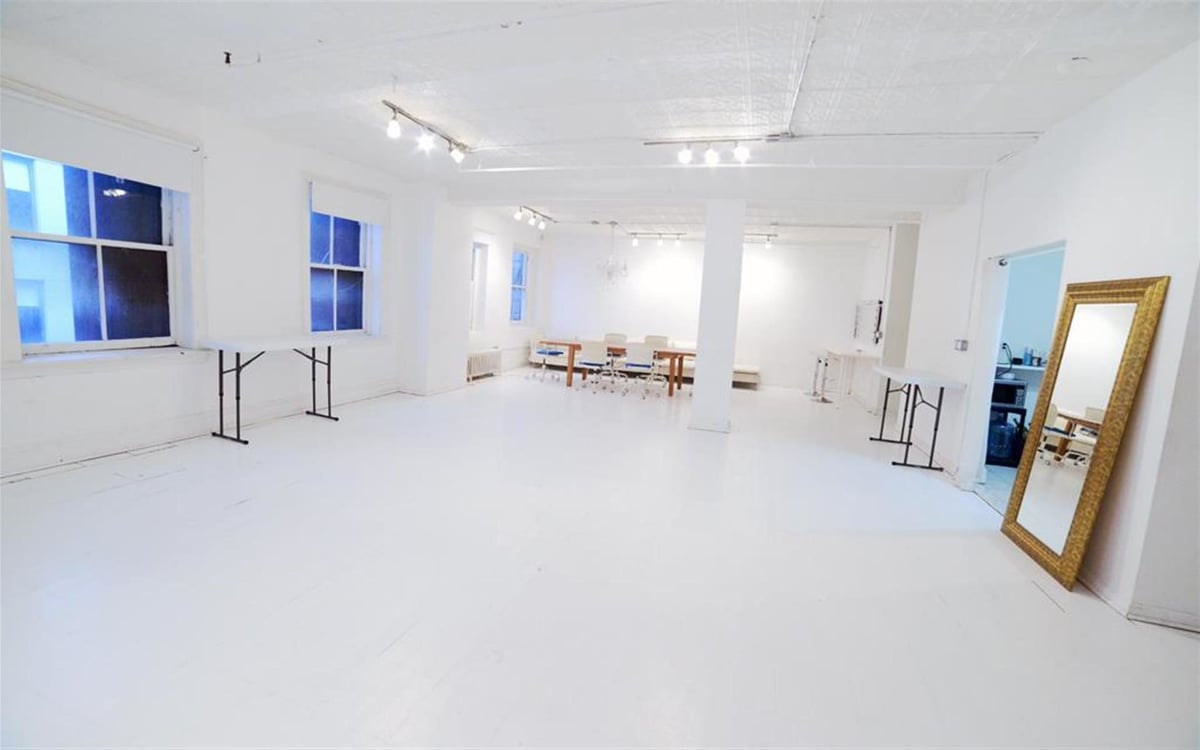
A few points to keep in mind when coming up with a layout that works for you and your company. Firstly, the layout shouldn’t merely accommodate the size of your current team, but, more importantly, should account for your team’s growth rate. Especially in the fast-paced startup world, having a layout that’s modular can help you save the time and money you’d typically reserve for construction, new furniture, and extra build-out. Another advantage of a flexible layout is that you can more easily accommodate other teams, which is perfect if you want to list your extra desks or surplus space and monetize your current office through LiquidSpace.
Plan on having about 100 to 250 square feet per person, but that range can give you a lot of room. Ensure that there’s a place for people’s personal items, so everyone can feel independent in the office home. There should also be places for employees to unwind in the office – couches, gaming tables, TVs, kitchens and other common areas can help employees build camaraderie while in the work environment.
2. Portray your in office a good light
Light can naturally influence our moods, energy, and attentiveness, and by that productivity and workplace satisfaction. Know the feeling of an overwhelmingly bright, fluorescent room? It’s not typically a pleasant one. But, imagine again, an office filled with big windows, brightly lit in midday, like this private office at Curbstand, Inc. in Beverly Hills.
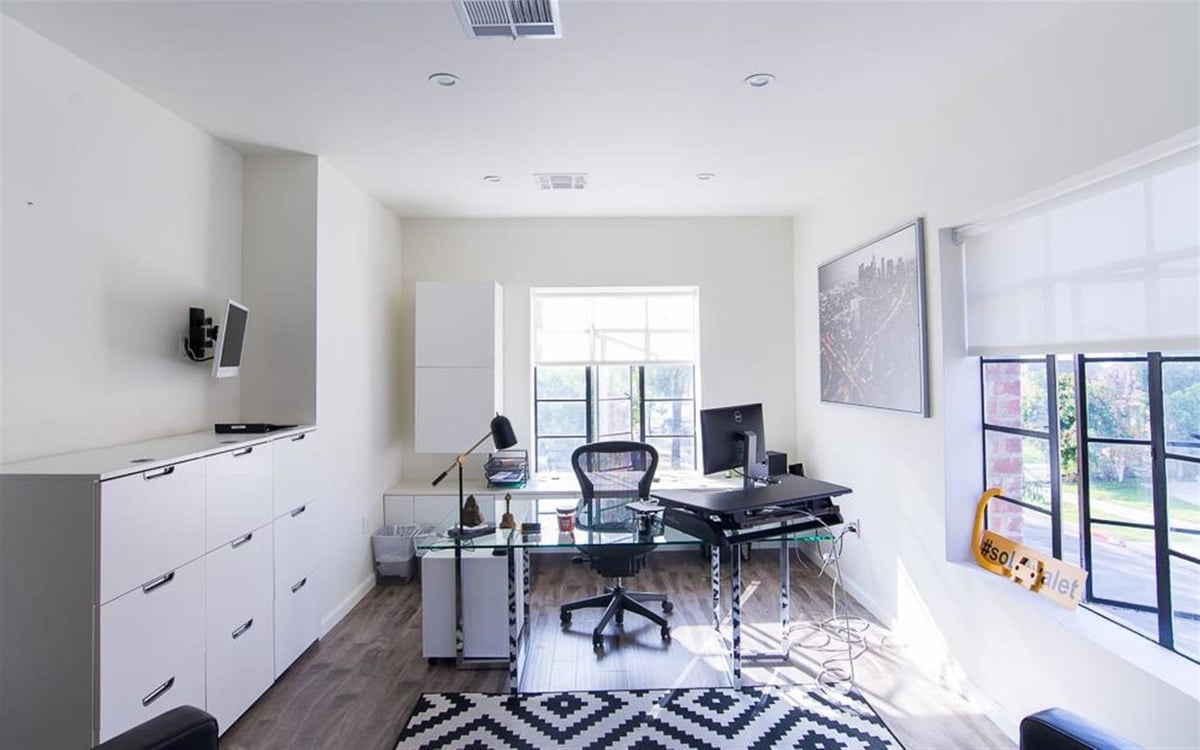
You can have a well-lit office even if you’re not in a workspace with window views. See how Level in Jacksonville, FL mixes orange light tones with fluorescents to create a warm, but not drowsy environment.
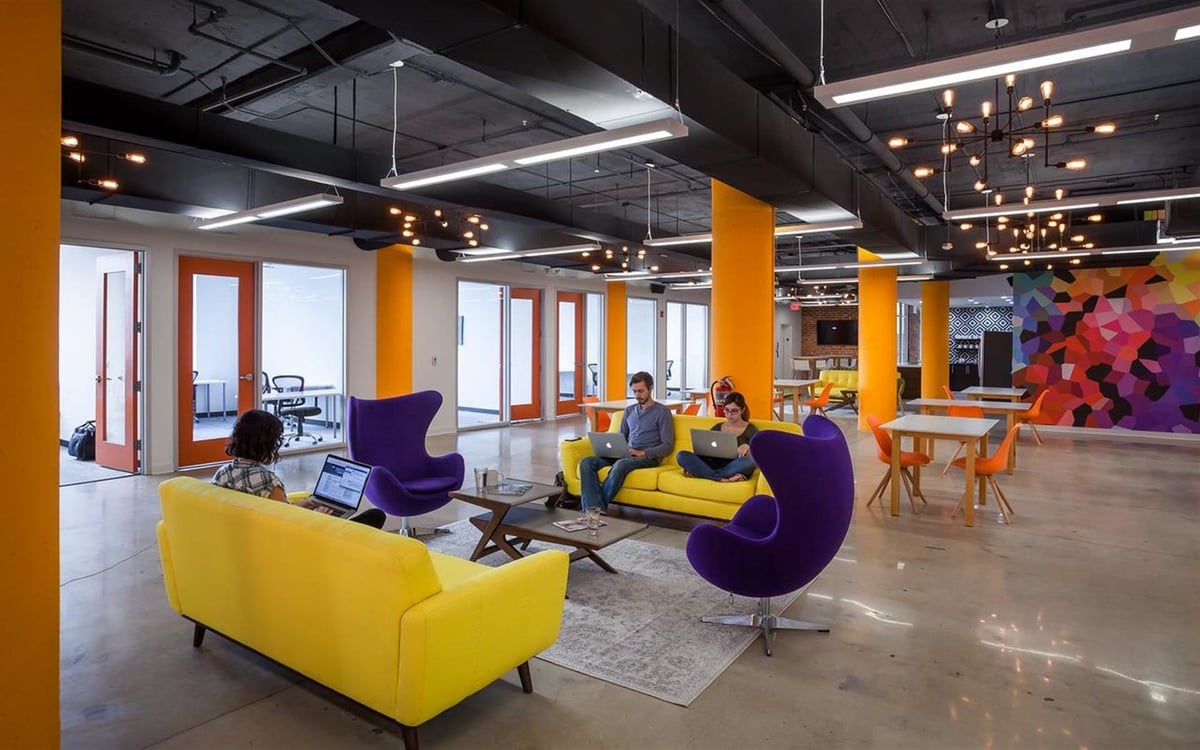
Be conscious of your lighting choices, and be certain to provide ample lighting in every part of your workspace. If you have natural light, supplement it with a lighting scheme that isn’t overbearing, but is strong enough to provide consistent illumination in the space.
3. Give color to your work environment
Just as we’re inherently prone to the emotional and mental effects of light, so are we to color. Seeing a halting red, like that of a stop sign, yields a much different effect than the pleasant tones of a deep blue sky. In fact, Steve Palmer, of UC Berkeley’s Psychology Departments, says: “Cross-culturally, the most highly favored color is very saturated blue.” That’s a color like this accent wall at Intelligent Office in Boston:
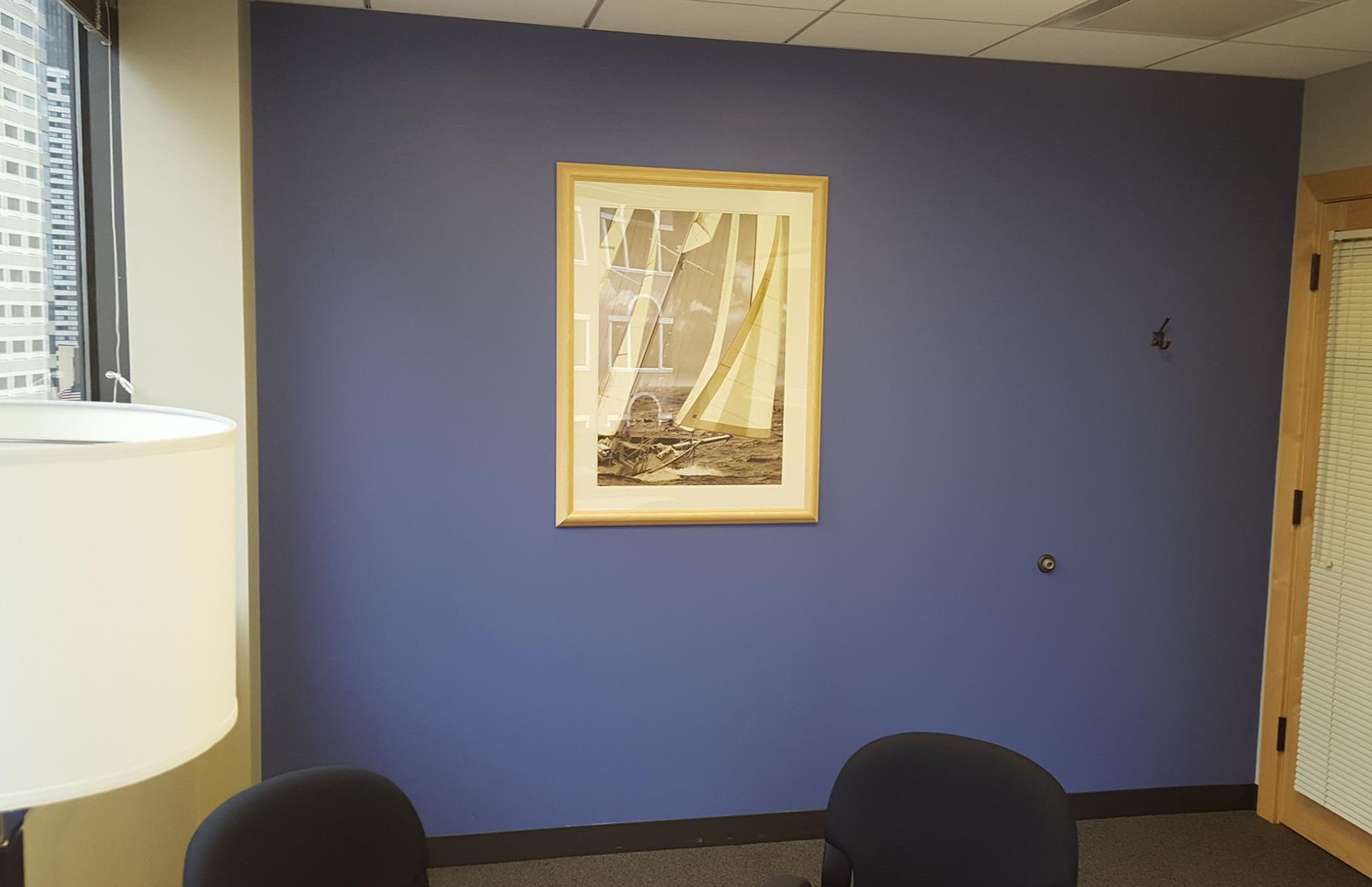
Remember that you can brighten up your room with more than just a can of paint. Paintings, furniture, art installations, and plants, can all add a little color to your workspace.
4. Ensure your space sounds like a winner
Having big, open windows in your workspace has its advantages, lots of light for example is a great feature of large windows. But especially in cities, big windows can mean a lot of noise. So how do you ensure your working environment is quiet enough for focus, but casual enough for collaboration?
You can use soundproofing to mute sound, but soundproofing can only go so far. The layout is essential in determining where and how sounds travel.
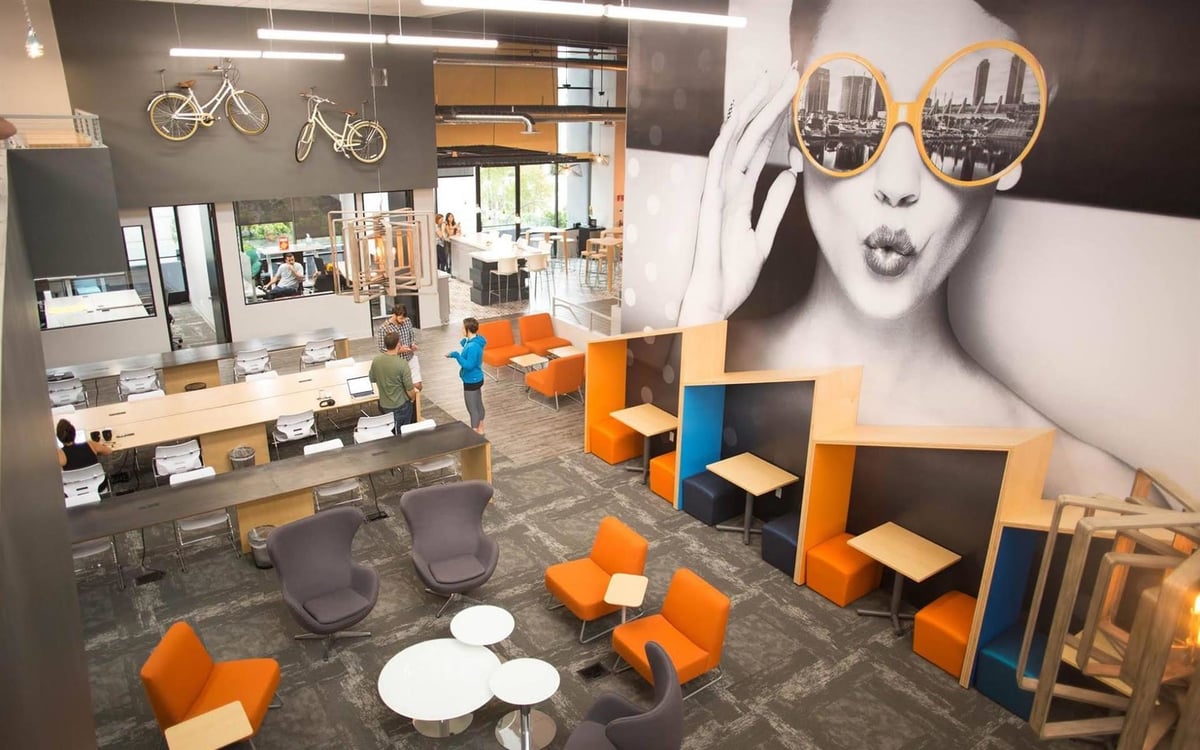
Downtown Works in San Diego has a great open layout and plenty of phone booths to keep conversations private and noises down. Phone Booths are the perfect solution for separating noisy areas from quieter ones.
5. Maintain a comfortable climate
Your workspace climate doesn’t just refer to whether it’s warm or cold at the office, but also the cultural climate and overall mood of the people working there. However, temperature is an important factor in employee mood. So important, in fact, that scientists in the sixties developed a “thermal comfort model”. Recently researchers have been questioning that model because it was built for a mostly-male workforce, which further proves the importance of climate in the office.
If you work in a flexible space, having cooler and warmer areas throughout the office would accommodate different body types and temperature preferences. Dr. Kingma – the one who conducted the study calling the old temperature model into question – suggests that women might prefer a 70º Fahrenheit room, while men might prefer a 75º room. I’d say, just keep at 72.5º to keep the climate balanced.
Having all of the above elements of design in check, and your overall company climate will likely be positive. Before you choose your next office, consider how you might incorporate these elements of design into your workspace home!
Ready to continue your journey?
There are two great ways to do it.
Ready to continue your journey?
There are two great ways to do it.






